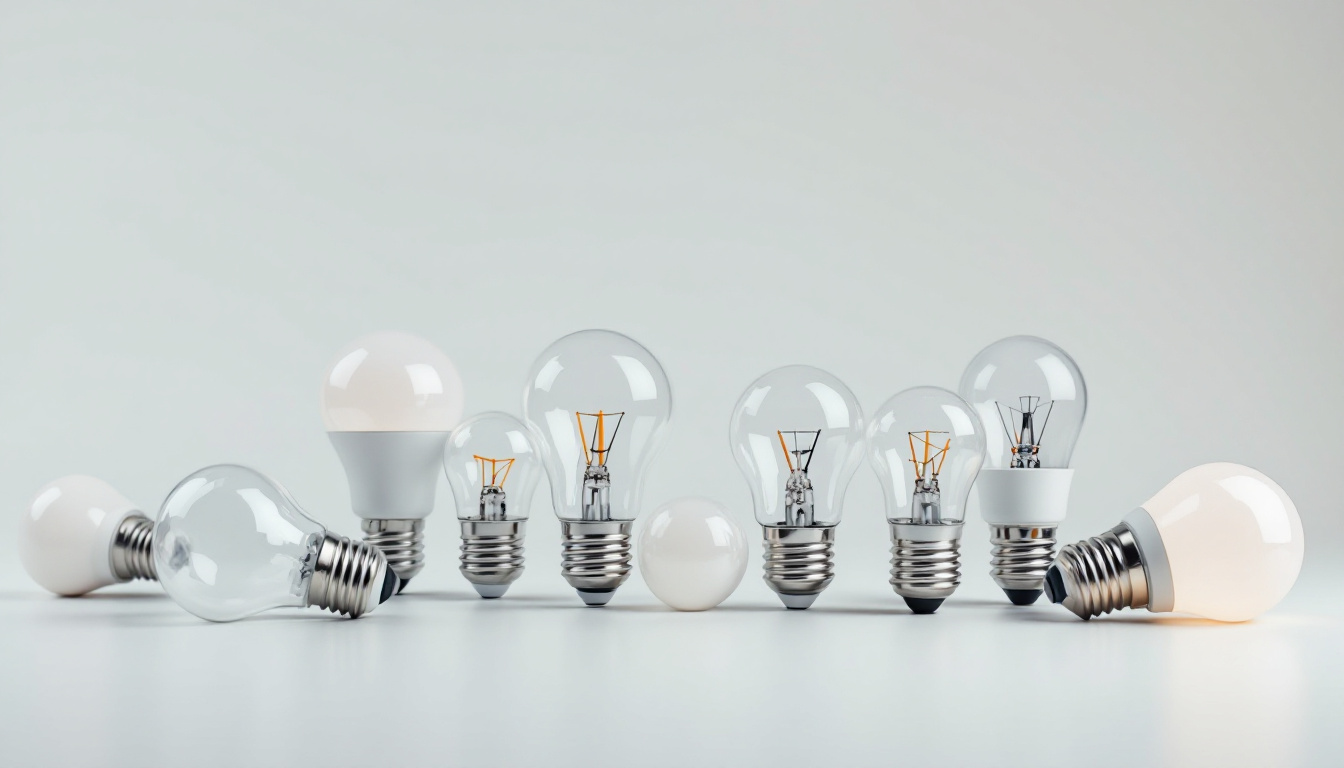
As the demand for energy-efficient lighting solutions continues to grow, LED shop lights have emerged as a popular choice among lighting contractors. Not only do these lights provide superior brightness, but they also offer significant cost-saving opportunities for both contractors and their clients. This article explores the brightest LED shop lights available on the market today, along with cost-saving strategies that can enhance profitability and sustainability for lighting contractors.
LED shop lights are designed to provide high-quality illumination for various commercial and industrial applications. They are known for their energy efficiency, long lifespan, and low maintenance costs. Unlike traditional fluorescent or incandescent lights, LED technology converts a higher percentage of energy into light, resulting in lower electricity bills and reduced environmental impact.
One of the most compelling reasons to choose LED shop lights is their energy efficiency. LEDs consume significantly less power than traditional lighting options, which translates to substantial savings over time. Additionally, they have a longer lifespan, often lasting up to 25 times longer than incandescent bulbs. This longevity means fewer replacements, reducing labor costs and waste.
Furthermore, LED lights emit less heat compared to their counterparts, which can lead to lower cooling costs in commercial spaces. This aspect is particularly beneficial in large warehouses or manufacturing facilities where heat buildup can be a concern. The combination of energy savings and reduced maintenance makes LED shop lights an attractive investment for contractors and their clients alike.
Moreover, LED technology is continually evolving, with advancements leading to even more efficient models that offer enhanced brightness and color rendering. This means that businesses can not only save on energy costs but also improve the quality of light in their workspaces, which can enhance productivity and safety. For example, in environments where precision is crucial, such as automotive repair shops or electronics manufacturing, the superior color accuracy of LED lights can make a significant difference in the quality of work produced.
LED shop lights come in various designs and configurations to suit different needs. Common types include linear LED lights, high bay lights, and low bay lights. Linear LED lights are ideal for general lighting in workshops and garages, while high bay lights are perfect for spaces with high ceilings, such as warehouses and distribution centers. Low bay lights, on the other hand, are designed for areas with lower ceilings, providing focused illumination where it is needed most.
Choosing the right type of LED shop light can significantly impact the overall effectiveness and efficiency of the lighting system. Contractors should assess the specific requirements of each project, considering factors such as ceiling height, space usage, and desired brightness levels. Additionally, the layout of the space should be taken into account; for instance, using a combination of different types of LED lights can help achieve a more uniform light distribution, reducing shadows and enhancing visibility in critical work areas.
Another important consideration is the color temperature of the LED lights, which can range from warm white to cool daylight. Warmer tones can create a cozy atmosphere, making them suitable for retail spaces, while cooler tones are often preferred in industrial settings where clarity and alertness are paramount. By selecting the appropriate color temperature, businesses can not only improve the aesthetic appeal of their environments but also influence employee mood and productivity positively.
For lighting contractors, implementing cost-saving strategies is essential to maintain competitiveness and profitability. Here are several effective approaches to consider when working with LED shop lights.
One of the most straightforward ways to reduce costs is through bulk purchasing. Many suppliers offer discounts for larger orders, which can significantly lower the per-unit price of LED shop lights. Establishing strong relationships with suppliers can also lead to better pricing and exclusive deals, allowing contractors to maximize their profit margins.
Additionally, contractors should keep an eye on market trends and seasonal promotions. Timing purchases strategically can lead to further savings, especially during off-peak periods when suppliers may be more willing to negotiate prices.
Many utility companies and government programs offer rebates and incentives for businesses that invest in energy-efficient lighting solutions. Lighting contractors should educate their clients about these opportunities, as they can significantly offset the initial costs of LED shop lights. By helping clients navigate the rebate process, contractors can enhance their value proposition and foster long-term relationships.
Furthermore, staying informed about local, state, and federal energy efficiency programs can provide contractors with additional resources to share with clients. This knowledge not only aids in cost savings but also positions contractors as trusted advisors in the industry.
Integrating smart lighting technology can further enhance energy savings and operational efficiency. Smart LED shop lights can be controlled remotely, allowing for adjustments based on occupancy, time of day, or specific tasks being performed. This level of control can lead to significant reductions in energy consumption, especially in spaces that are not constantly occupied.
Contractors should consider recommending smart lighting solutions to clients who are looking to optimize their energy usage. While the initial investment may be higher, the long-term savings and added convenience can make it a worthwhile consideration.
When selecting LED shop lights, brightness and color temperature are critical factors that can impact the effectiveness of the lighting system. Understanding how to choose the right specifications can lead to better outcomes for both contractors and their clients.
Brightness is measured in lumens, and selecting the appropriate lumen output is essential for achieving the desired level of illumination in a workspace. Different areas have varying lighting needs; for instance, a workshop may require higher lumens for detailed tasks, while a storage area may need less. Contractors should conduct a thorough assessment of each space to determine the ideal lumen levels.
Additionally, it is important to consider the layout and design of the space. Factors such as wall colors, ceiling height, and the presence of windows can all influence how light is perceived. By taking these elements into account, contractors can ensure that the right brightness is achieved, enhancing both functionality and aesthetics.
Color temperature, measured in Kelvins (K), affects the ambiance and functionality of a space. For example, a cooler color temperature (5000K-6500K) is often preferred in work environments, as it mimics daylight and promotes alertness. Conversely, warmer color temperatures (2700K-3000K) can create a more relaxed atmosphere, suitable for areas such as break rooms or lounges.
Contractors should discuss color temperature options with their clients to align lighting choices with the intended use of each space. This consideration can enhance overall satisfaction and ensure that the lighting meets the specific needs of the environment.
Proper installation of LED shop lights is crucial for maximizing their performance and longevity. Lighting contractors should adhere to best practices to ensure that the lights function optimally and provide the expected benefits.
When installing LED shop lights, placement and spacing are key factors that influence light distribution. Lights should be positioned to minimize shadows and provide even illumination across the workspace. Contractors should consider the layout of the area, including any obstacles that may block light, such as shelves or machinery.
Using lighting design software can help contractors visualize the placement of lights and make informed decisions about spacing. This technology can also assist in calculating the required lumen output based on the specific dimensions and characteristics of the space.
Safety is paramount when installing LED shop lights. Contractors must ensure that all wiring and electrical connections are made according to local codes and regulations. This includes using the appropriate gauge of wire, securing connections, and ensuring that all fixtures are properly grounded.
Additionally, contractors should take care to avoid overloading circuits, which can lead to flickering lights or even electrical fires. Conducting a thorough assessment of the existing electrical infrastructure can help identify any potential issues before installation begins.
Maintaining LED shop lights is essential for ensuring their longevity and performance. While LEDs are generally low-maintenance, there are still some best practices that contractors should follow to keep the lighting systems in optimal condition.
Dust and debris can accumulate on LED fixtures, reducing their brightness and efficiency. Regular cleaning of the lights and surrounding areas can help maintain optimal performance. Contractors should recommend a cleaning schedule to clients, emphasizing the importance of keeping lights free from obstructions.
Using a soft cloth and mild cleaning solution is typically sufficient for cleaning LED fixtures. However, contractors should advise clients to avoid using harsh chemicals or abrasive materials that could damage the lights.
Monitoring the performance of LED shop lights is crucial for identifying any potential issues early on. Contractors should encourage clients to report any flickering, dimming, or other irregularities promptly. Regular inspections can also help identify any wiring or connection problems that may arise over time.
By staying proactive in maintenance and performance monitoring, contractors can ensure that their lighting systems continue to operate efficiently, providing both cost savings and enhanced functionality for their clients.
In the ever-evolving landscape of lighting solutions, LED shop lights stand out as a cost-effective and energy-efficient choice for contractors and their clients. By understanding the advantages of LED technology, implementing strategic cost-saving measures, and adhering to best practices in installation and maintenance, lighting contractors can enhance their service offerings and drive profitability.
As the demand for sustainable lighting solutions grows, staying informed about the latest trends and technologies will be essential for contractors looking to remain competitive in the industry. Embracing these strategies not only benefits the bottom line but also contributes to a more sustainable future for all.
Ready to elevate your lighting game and pass on the savings to your clients? Look no further than LumenWholesale for the brightest LED shop lights and a wealth of cost-saving strategies. Our commitment to quality, affordability, and convenience ensures that you get the best value for your investment. Take advantage of our hassle-free bulk buying options and free shipping to get your premium lighting solutions on time and within budget. Don’t miss out on the opportunity to enhance your service offerings with our spec-grade lighting products. Wholesale Lighting at the Best Value is just a click away. Partner with LumenWholesale today and light up your projects with confidence.

Discover the essential guide to light bulb base sizes tailored for lighting contractors.

Discover the essential insights into light canopies as we address the most common questions lighting contractors have.

Discover why LED round ceiling lights are a must-have for every lighting contractor.

Discover essential insights for lighting contractors on selecting and installing Ballast 4 Lamp T8 systems.